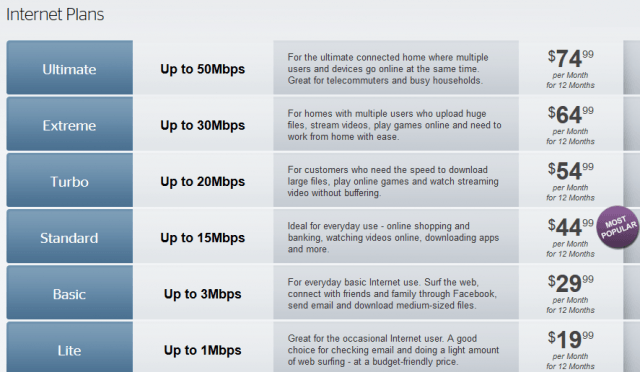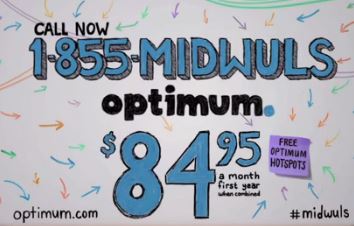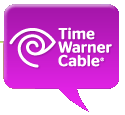
Time Warner’s “Because We Can” One-Time Charge applies to new customers signing up for certain promotions.
Time Warner Cable has increased the monthly rental fee for its leased cable modem from $3.95 a month to $4.99 a month and has introduced a “one-time charge” of $19.99 applicable to certain Internet service new customer promotions.
CEO Glenn Britt earlier commented that Time Warner Cable had room to grow its modem lease fee:
“It was received with a minimum of push-back and we’re still actually charging less than Comcast ($7/month), so I think there is room to charge more going forward. People can buy their own if they want and a small percentage of customers have chosen to do that which is fine with us.”
For now, the increase only applies to new customers, but Stop the Cap! expects it will also eventually apply to current customers as part of the next round of rate increases. The Internet Modem with Free Home Wi-Fi, available to customers ordering 30/5 or 50/5Mbps service costs $14.99 a month.
Time Warner Cable has pulled back on customer promotions since the beginning of the year and has begun shifting its pricing for its most profitable service — broadband, to capture price-sensitive customers who have been unable to previously afford Internet-only service from the company.
Time Warner has introduced a new “Lite” tier offering 1Mbps service for $20 a month and has made the 3Mbps “Basic” service the staple of many of its bundled promotions.

 Stop the Cap! strongly encourages Time Warner Cable customers to buy their own cable modems and avoid the rental fees. Customers can also bypass the rental fee by signing up for Earthlink service through Time Warner Cable.
Stop the Cap! strongly encourages Time Warner Cable customers to buy their own cable modems and avoid the rental fees. Customers can also bypass the rental fee by signing up for Earthlink service through Time Warner Cable.
Our top modem choice remains the Motorola SB6141, which can be found at the “Buy It Now” price on eBay as low as $77.99 with free shipping and no upfront sales tax for most buyers. This model does not include Wi-Fi, but most people don’t need it — a router generally provides Wi-Fi connectivity on its own.
We highly recommend purchasing DOCSIS 3-ready modems to avoid obsolescence issues.
The most recent list of “acceptable” modems that can be activated with your Time Warner Cable broadband service are:
Turbo, Extreme and Ultimate Service Plans
| Vendor | Model |
| Motorola | SBG6580 |
| Motorola | SB6141 STOP THE CAP! RECOMMENDED |
| Netgear | CMD31T |
| Motorola | SB6121 |
| Zoom | 5341J |
| Zoom | 5350 |
| Zoom | 5352 |
| ZyXEL | CDA-30360 |
Lite, Basic and Standard Service Plans
| Vendor | Model |
| Motorola | SBG6580 |
| Motorola | SB6141 STOP THE CAP! RECOMMENDED |
| Motorola | SB5101 |
| Motorola | SB5101U |
| Motorola | SBG901 |
| Netgear | CMD31T |
| Motorola | SB6121 |
| Zoom | 5341J |
| Zoom | 5350 |
| Zoom | 5352 |
| ZyXEL | CDA-30360 |


 Subscribe
Subscribe
 With promotions from Time Warner Cable
With promotions from Time Warner Cable  With requirements like that, customers can easily be tripped up along the way and get rejected for the rebate.
With requirements like that, customers can easily be tripped up along the way and get rejected for the rebate. If your rebate request was denied and you made a good faith effort to follow the rules, don’t give up and say goodbye to $200.
If your rebate request was denied and you made a good faith effort to follow the rules, don’t give up and say goodbye to $200. Frontier Communications is considering adding redundant backup fiber service in certain areas to prevent major customer outages when fiber cables get severed by contractors or storm events.
Frontier Communications is considering adding redundant backup fiber service in certain areas to prevent major customer outages when fiber cables get severed by contractors or storm events.

